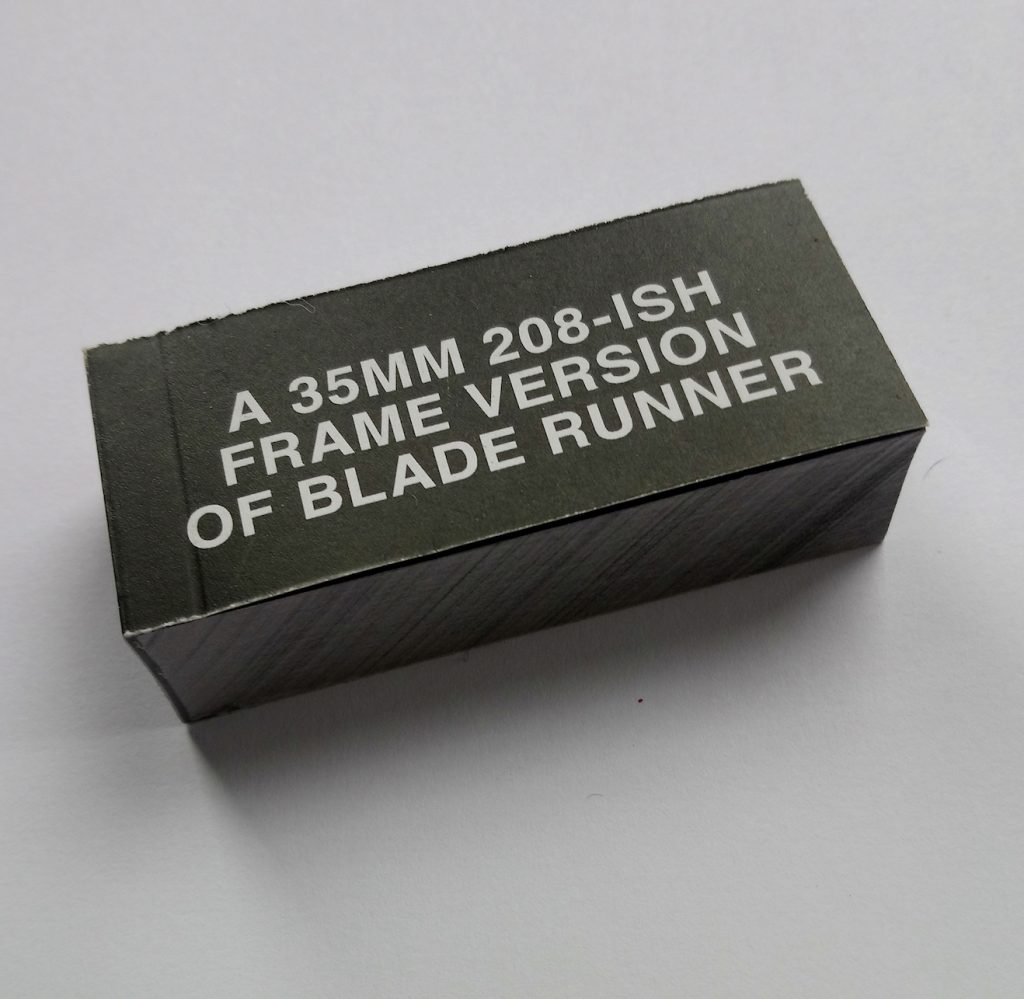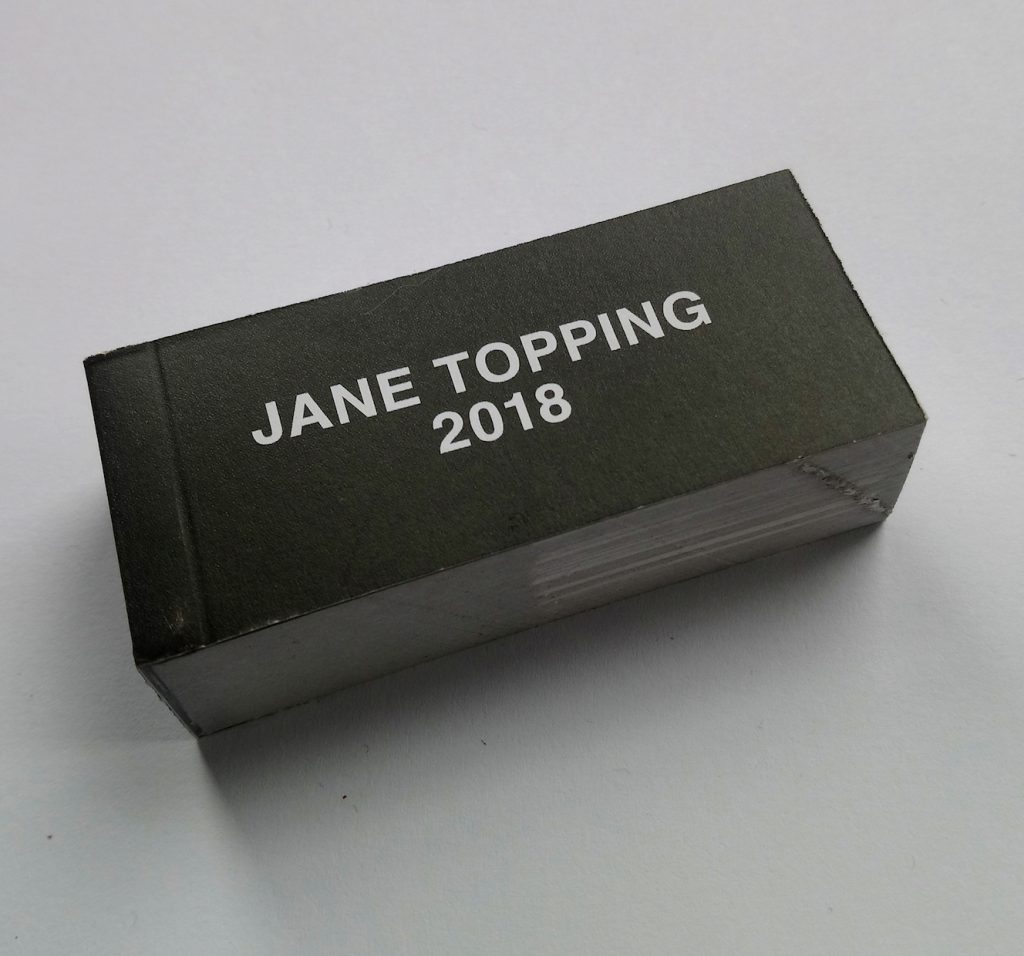NeMLA 53rd Annual Convention 2022
Delighted to be given the opportunity to present remotely at the Northeast Modern Language Association 53rd Annual Convention this year – my second contribution to this friendly, interdisciplinary affair. I was discussing the flick book A 35mm 208-ish Frame Version of Blade Runner (2018) in the context of literary and film adaptation. Thank you Bill Mooney for getting the flick books out in Baltimore and to all at NeMLA, John Hopkins University & University at Buffalo. Here’s the abstract:
Panel: Film Authorship and Adaptation
Title: How Many Electric Sheep?: Yet Another Adaptation of Blade Runner.
Abstract: As for my own role in the BLADE RUNNER project, I can only say that I did not know that a work of mine or a set of ideas of mine could be escalated into such stunning dimensions. (Dick, 1981).
In 2018 I joined a long list of filmmakers who adapted Do Androids Dream of Electric Sheep? (Dick, 1968) as Blade Runner (Scott, 1982). This paper considers Blade Runner as an artefact which is not a single thing but a matrix of ideas developed by a number of authors over a number of platforms. One result of this is that adaptations of either Dick’s ur-text or Scott’s ‘first’ adaptation come into being in a process which is multiple. The works that make up Blade Runner the cultural object are an entanglement of narrative threads which do not begin or end but are instead informed and enriched by their coalescence. As a result, any adaptation can be easily thought of as being a part of Blade Runner’s complex cultural whole and that any notions that a viewer may have concerning linear time in relation to that coalescence are quickly rendered redundant. This paper will argue that my version, a double-sided flick-book titled A 35mm 208-ish Frame Version of Blade Runner (Topping, 2018), is both adaptation and novel narrative thread which enriches and complicates the cultural object known as Blade Runner.


